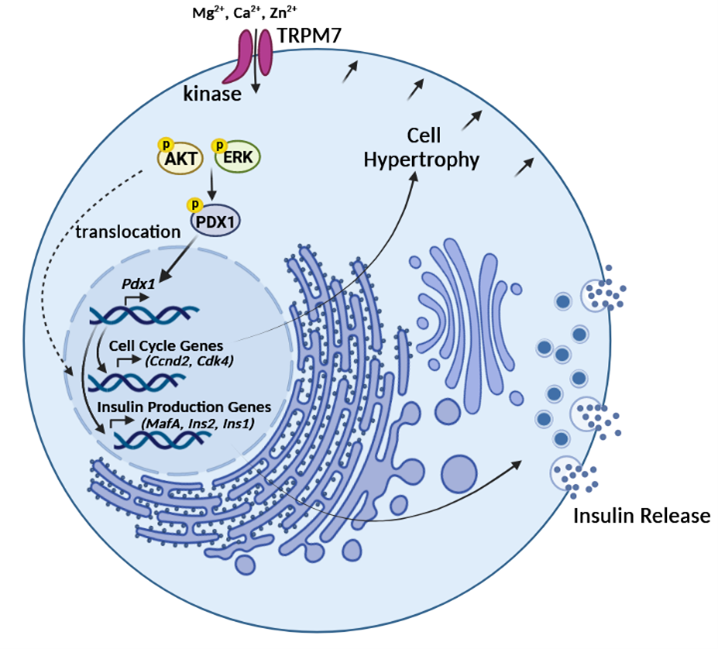AG Gudermann/Khajavi
The role of TRP channels in pancreatic beta-cell function and regulation of insulin release
Leitung: Dr. Noushafarin Khajavi
Arbeitsgruppenmitglieder:
Wissenschaftliche Mitarbeiterin: Pascale Schreier
Naturwissenschaftliche Doktoranden/Innen: Severin Boulassel
Medizindoktorand: Philipp Beyerle
Masterkandidaten/Innen: Anna-Maria Melyshi
Wissenschaftliche Hilfskraft: Tanja Gentz
Abgeschlossene Masterarbeiten: Dimitrije Spasic
Ehemalige Praktikanten: Emmanuel Sebastien Cruz, Tanja Gentz, Marco Müller, Zoe Carmen Möller Ramon, Klea Ricku, Elena de la Mata Santaella, Marisa Schübel, Stefan Dalecki, Jennifer Mittermaier
Our research is dedicated to the targeted manipulation of genes for an in-depth in vivo analysis of transient receptor potential (TRP) channel functions in pancreatic β-cells.
Type 2 diabetes (T2D) arises from the inability of β-cells to adequately compensate for increased metabolic demands by releasing sufficient insulin. Currently, two billion adults and forty million children are dealing with obesity, a condition that affects 350 million individuals who are also burdened by T2D. The majority of individuals with excess body weight have exhibited significant resistance to prevailing weight loss methods. Consequently, the urgent need to develop safe and efficacious drug therapies, complementing a healthy lifestyle, has become a global priority. A pivotal objective in diabetes research and drug development involves the identification of factors governing β‐cell function and affecting insulin secretion. Recent studies have unveiled the presence of several TRP channels in pancreatic β-cells, implying their crucial role in insulin secretion regulation. However, the precise functions of various TRPs, such as TRPM7, in insulin secretion, glucose homeostasis, and T2D development remain elusive.

In our recent study, we highlighted the disruptive impact on insulin secretion and progressive glucose intolerance resulting from the selective deletion of Trpm7 in β-cells. TRPM7, being the primary Mg2+ channel highly expressed in pancreatic β-cells, initially led us to associate this effect with a decrease in Mg2+ concentration within the cells of this mouse model. However, our comprehensive investigations unveiled that the diminished insulinotropic response in β-cell–specific Trpm7-knockout mice stems from a reduction in insulin production due to impaired enzymatic activity of this protein. Although our research emphasizes the pivotal role of TRPM7 kinase in insulin synthesis, β-cell dynamics, and glucose homeostasis, the precise molecular mechanism governing these functions remains elusive. Our next phase in this project will be to delve into understanding the intricate molecular mechanisms and downstream signaling pathways that contribute to gene transcription via TRPM7 kinase. This exciting journey aims to unravel the complexities and unlock key insights that could potentially revolutionize diabetes research and therapeutic approaches.

